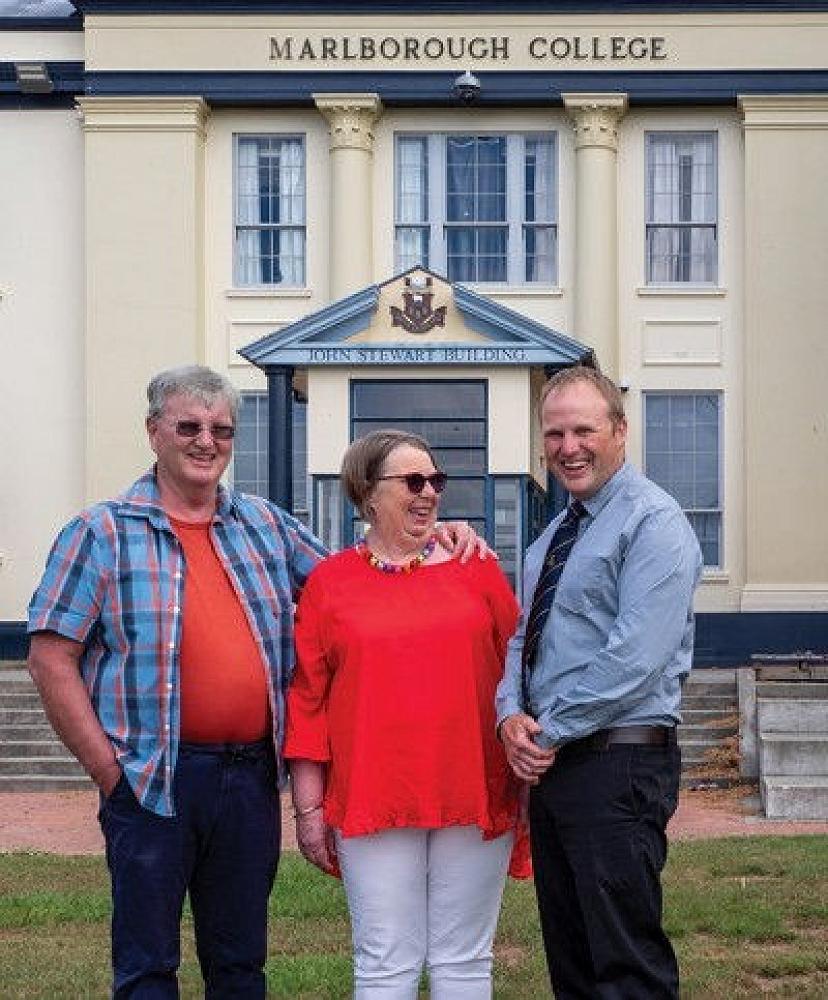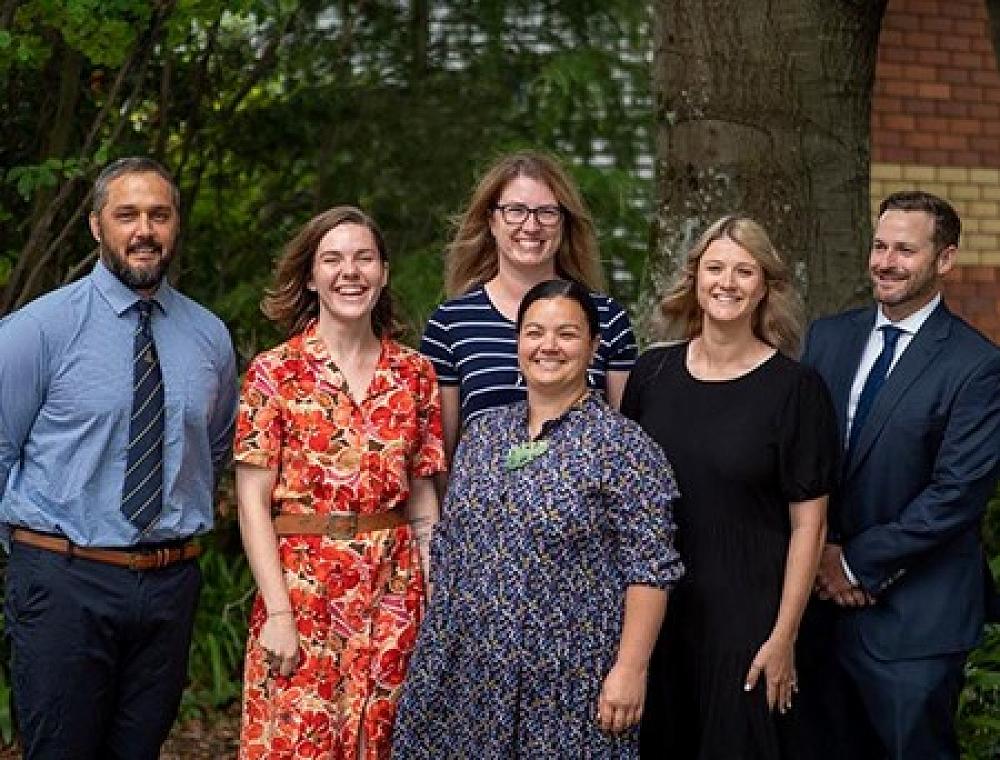
Laying foundations for change in Marlborough
https://www.tetatoruowairau.nz/post/laying-foundations-for-change-in-marlborough
The Ministry of Education’s largest and most complex relocation and rebuild project will result in significant transformation for three schools in Blenheim.
The co-location of Marlborough Girls’ College (MGC) and Marlborough Boys’ College (MBC) to a new shared campus, and the relocation of Bohally Intermediate to the existing Boys’ College site has been named Te Tātoru o Wairau by local iwi to represent three strands (kura) woven and working together.
In 2015, the Marlborough community opted for a co-located secondary school model on a green-fields site. By 2018, when a suitable site could not be found, the decision was made to use the current Girls’ College and Bohally Intermediate sites for the co-location.
While it has taken some years to get to the current master planning stage, MBC Deputy Principal Michael Heath says that has been a real positive. He has been supporting the work around co-location since 2016 and is currently involved in prototyping innovation and change management for the boys’ college.
“We’ve made the most of the time and have been able to question what we think we need for the future and take groups around the country to visit different schools as part of the original writing of the brief.
“At the beginning I was a bit sceptical that we might lose some of the history and tradition if we move. But very quickly, I could see that the opportunities were massive and that we could still maintain some of that history and tradition,” he says.
Defining co-location
Working with Jo Chamberlain, Deputy Principal at MGC at the time, Michael says that quite early on it was decided to write one education brief for both schools around how co-location would look in Marlborough.
“The Ministry has really allowed us to define what co-location means for Blenheim. In Christchurch, where parents have more options, Avonside Girls’ High School and Shirley Boys’ High School are co-located single sex schools. But in Blenheim, there are no co-ed options.
“There are people in the community who want co-ed, or more social opportunities for boys and girls to interact in that age group. Our co-location is about getting the best of single-sex classroom learning, but the campus will be integrated,” says Michael.
Best of both worlds
MGC principal Mary-Jeanne Lynch has been in the role since 2018 and MBC principal John Kendal (Tapuika of Te Arawa) joined the school at the beginning of 2021.
They are both excited at how the rebuild and co-location opportunities will lead them into the future. The combined rolls of the two schools will be around 2,500 students, with further projected roll growth.
Mary-Jeanne was Deputy Principal at Avonside Girls’ High School in Christchurch and involved in leading their co-location and rebuild mahi. She explains that her vision for co-location is that they are two schools on one campus, and suggests that the question, ‘are you two separate schools, or one big co-ed school?’ is a binary approach.
“I’m into the notion that co-location provides an awesome opportunity to be ‘both, and’. We’re both single sex schools providing girls-only and boys-only learning for our students; AND we also provide the opportunity for co-ed socialisation,” she adds.

John agrees “There will be lots of opportunities for cross-over. Our whānau areas within the school will be separate, but we know that in the senior school, as we look to prepare our students for life beyond secondary school, we want them to be able to work effectively with the opposite gender, because that’s what we get in the real world.”
Currently some students can study some subjects at the other school across town, but the shared campus will offer students increased access to curriculum options, resources and specialist teachers.
“Subjects like foreign languages will become more viable because there will be a 2,000-plus student pool,” says Michael.
“The other quite exciting areas are things like technology. It will be exciting to offer a range of technology pathways to both girls and boys. At the moment, if a girl wants to do engineering, she has to come to Boys’ College to do it, which is a bit of a barrier, so it will be easier for that sort of inter-change to take place,” he says.
Flexible learning environments
While the secondary schools have previously run on more traditional lines largely dictated by the architecture of single cell classrooms, the new builds will catapult the kura into 21st Century pedagogies.
The education and design briefs will feature flexible learning environments with more opportunities for collaborative and cross-curricular teaching.
In the past few years, both schools have been developing cross-curricular programmes in their junior schools, with teachers at MGC designing new integrated context-based courses and teaching collaboratively.
“We will continue to have ongoing PLD for staff around collaborative planning and teaching, how to plan cross-curricular, or integrated courses and looking at differentiation and how to meet all of the needs of learners. We’re using the UDL (Universal Design for Learning) framework to underpin that,” says Mary-Jeanne.
The two schools have been aligning policies at Board level and staff members from both schools are involved in Te Tātoru o Wairau work streams which include operations, school culture and curriculum. Timetables have been aligned and the schools share some common systems and structures.
Whānau-based model
Wellbeing and pastoral care are key to the vision for the new schools, which will be designed around a whānau-based model. The built environment will feature dedicated spaces for each house, or whānau group, with students doing some learning in these spaces.
“Our focus is on the pastoral space,” explains John. “We know, traditionally, that if you come here as a Year 9, the transition from intermediate to secondary school can be somewhat daunting; so we’re wanting to break those barriers down.
“We want to ensure that through a whānau system, we’ve got that tuakana teina. We’ll have a family-based grouping from Year 9–13. We believe that will have a lot of positive outcomes for our boys and that creates that brotherhood that makes things hum,” he says.
Mary-Jeanne believes that creating a whānau setting for learning will ensure ākonga have a sense of belonging and feel that their culture and identity is valued.
“If we have a campus of up to 3,000 students, it’s going to be so easy for some to get lost. We are trying to achieve that personalised, family culture so that every student is supported and honoured; their progression is supported, and they don’t get lost,” she says.
Master planning
Master planning for the new campuses will begin this year. New layouts will be developed for the three schools and building locations and cultural features will be finalised.
The new co-located colleges will have a combined floor area of more than 22,700m2. Nearly 130 teaching spaces will provide capacity for 2,500 ākonga across the two kura, and future combined roll growth will also be considered.
A timeframe has not yet been established for this complex project which will be managed by Te Tumu consortium – 12 specialist companies led by Naylor Love.
Nicky Cameron-Dunn, Principal of Bohally Intermediate, says that the biggest community concern is around how the project will cause the least disruption to ākonga and their learning.
Scott Evans, infrastructure and digital hautū at the Ministry of Education, explains that master planning considers ways to minimise disruption to teaching and learning during construction and relocation of the kura.
“The requirement to completely rebuild three kura on two campuses, while still operating fully functioning kura on those sites, makes this a highly complex project. The Ministry, iwi and kura remain committed to ensuring that teaching and learning isn’t heavily disrupted during construction,” he says.

Logistics
“At this stage, it’s really about putting down the groundwork for the future of quality teaching and learning, and building confidence amongst our staff about change, and building leadership capacity amongst all of our staff,” says Mary-Jeanne.
With an enormous task ahead of them, she explains that the leadership team needs to problem-solve and maintain high quality teaching and learning for all ākonga now, but with a future focus, so that when a new building is ready, the schools are ready for change.
John adds that it will be exciting once they have done the master plan, to give the community something to see.
“The Ministry of Education has been very good at recognising that this is an educational transformation project, rather than a building project, and that the human side of it is the make-or-break side of it.
“We are conscious of the fact that we have to operate while the project is underway and Te Tumu are exploring the best options for the way that they phase and stage it which will minimise disruption,” he concludes.
